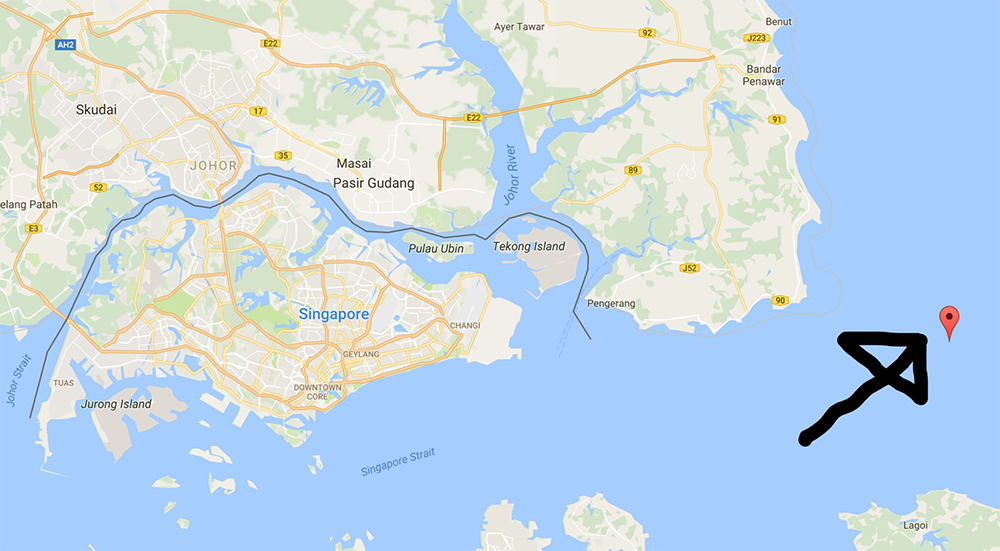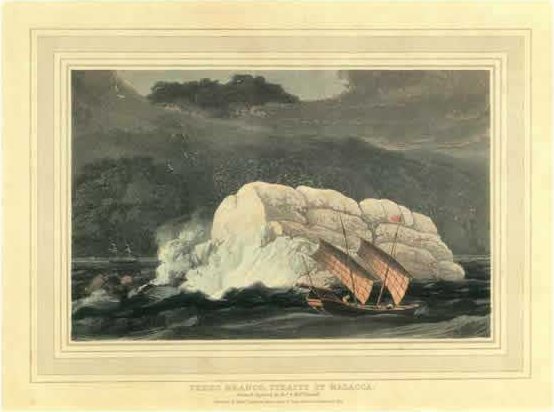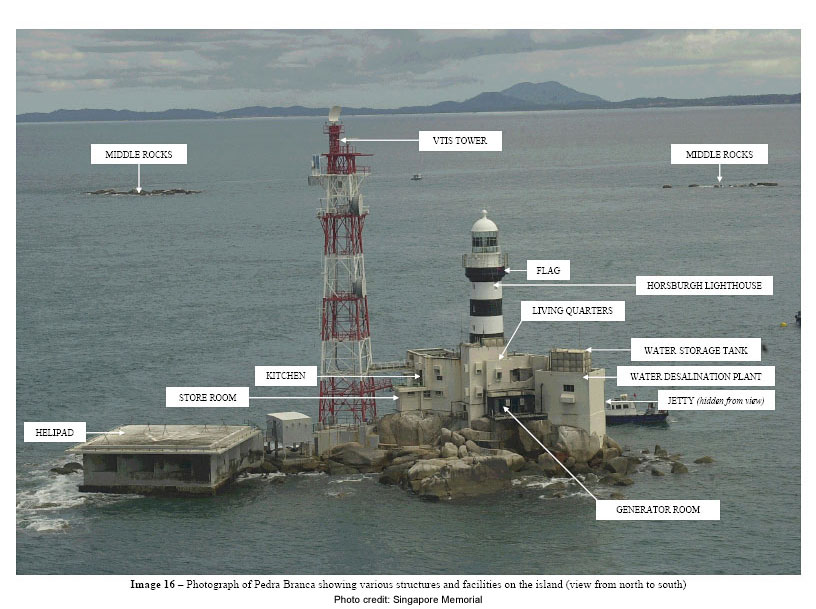So you woke up this morning and might have seen a couple of articles on your newsfeed on Pedra Branca.
 That's where it is.
That's where it is.
No idea what that is? No fear, we're here to bring you up to speed so that you'll have something to discuss with your colleagues at the water cooler come Monday.
1. Why is it white?
Pedra Branca is Portuguese for 'White Rock'. Its Malay name is Batu Puteh, which also means the same thing. What is interesting is why the rocks on Pedra Branca are white - it is the result of numerous coats of......(drumroll please).......bird droppings.
2. Danger Zone
The entire island is actually a reef of granite rocks, making it a kill zone if ships actually run aground. The white colouration made it an important navigational landmark to help guide ancient sailors away from its dangerous surrounding waters.
 Sketch of Pedra Branca by Thomas and William Daniell. Done in 1820. Image via Wikipedia.
Sketch of Pedra Branca by Thomas and William Daniell. Done in 1820. Image via Wikipedia.
Later, the British built a lighthouse on it and named it Horsburgh Lighthouse, after navigator and hydrographer, Captain James Horsburgh.
3. He said, she said
Both Malaysia and Singapore claimed Pedra Branca as their own. The dispute started arose in 1979 when Malaysia published a map claiming the island as hers.
Malaysia claimed that the island first belonged to the Sultanate of Johor. The British (and then Singapore) were merely granted permission to operate the Horsburgh Lighthouse on the island. Subsequently, when Johor joined the Federation of Malaysia, the ownership of Pedra Branca went to Malaysia - that is according to Malaysia.
 Image via Ministry of Foreign Affairs.
Image via Ministry of Foreign Affairs.
Singapore, on the other hand, claimed that Pedra Branca was no man's land when the British took over it. The British, and subsequently Singapore, maintained a continuous and effective display of state authority over the island from the 1850s - such as building piers, military assets, investigating shipwrecks within Pedra Branca’s territorial waters and granting/not granting permission to Malaysian officials to survey the waters surrounding the island. Singapore also produced a 1953 letter from a top Malaysian civil servant indicating that "Johore does not claim ownership of Pedra Branca".
The matter was finally brought up to the International Court of Justice (ICJ) in 2003. In 2008, the ICJ rule that Pedra Branca belongs to Singapore. Case closed.
4. So why is Pedra Branca appearing in my newsfeed again?
On 2 Feb 2017, Malaysia filed another application with the ICJ to review the judgement because of new evidence that have been discovered to support their claim. These evidence come in the form of 3 declassified documents released by the UK's National Archives:
1. Internal correspondence of the Singapore colonial authorities in 1958.
2. Incident report filed in 1958 by a British naval officer.
3. Annotated map of naval operations from the 1960s.
These documents were discovered in the British National Archives between 4 August 2016 and 30 January 2017.
According to Malaysia, the ICJ would have been bound to issue a different judgement in 2008 if they had been aware of these documents.
5. What next?
According to Singapore's Ministry of Foreign Affairs (MFA), Singapore is studying the new documents and has assembled a legal team to respond to the case. The team is made up of Attorney-General Lucien Wong, Professor S. Jayakumar, Professor Tommy Koh, and former Chief Justice Chan Sek Keong.
And that folks, is how a 38 year-old dispute over dung covered rocks is being revived on your Facebook newsfeed.
If you would like to read more about the case:
Singapore's Ministry of Foreign Affairs comments
Malaysia's Attorney General Chamber's Press Release
Correction: An earlier version of the article mentioned that Singapore produced a 1957 letter from a top Malaysian civil servant. That is incorrect. The letter was dated 1953. This article has been updated to reflect the correction.
Top image via Google Maps.
If you like what you read, follow us on Facebook and Twitter to get the latest updates.
If you like what you read, follow us on Facebook, Instagram, Twitter and Telegram to get the latest updates.